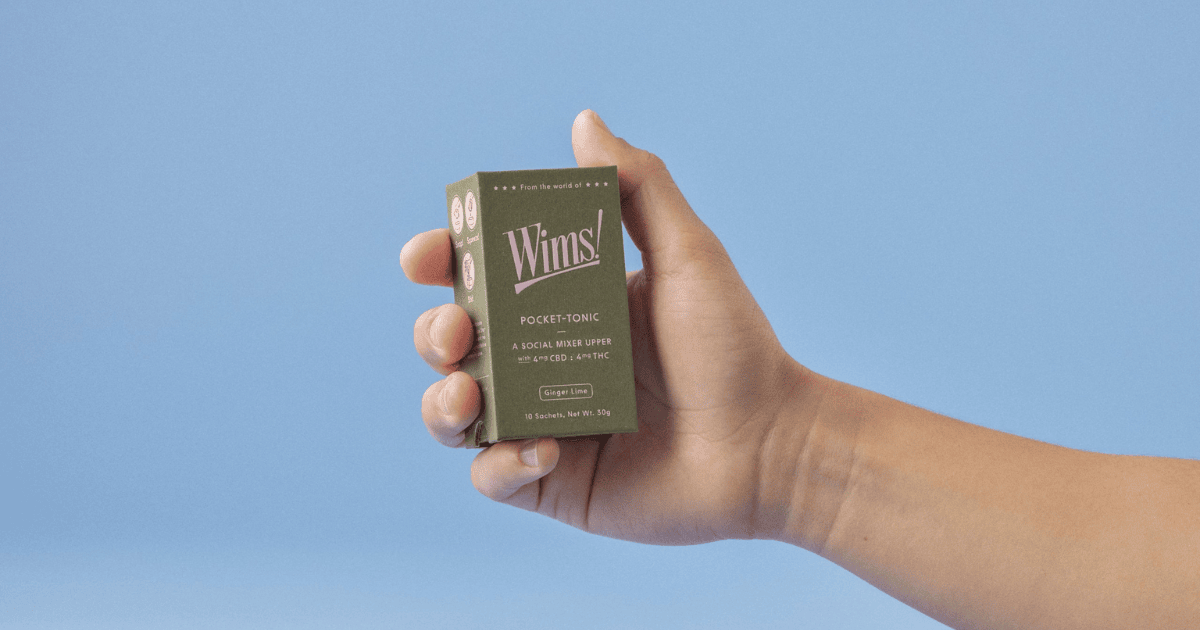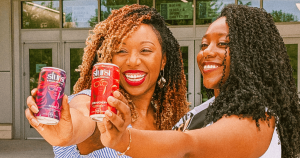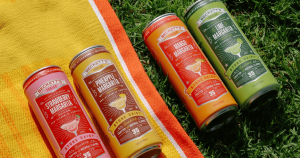The cannabis beverage category is maturing, and in that evolution, smaller is starting to look smarter.
Recent launches like 1906’s Off Duty and Wims! are introducing a new kind of product into the mix: THC beverage boosters.
These single-serve packets let consumers add THC to their beverage of choice, sidestepping the flavor issues and format limitations that ready-to-drink (RTD) options face. And while they may look niche at first glance, this format could become one of the most strategic growth plays in the infused beverage space.
The Market is Heating Up
The global cannabis beverages market was valued at around $1.2 billion in 2023. By 2030, that number is expected to more than triple, reaching $3.8 billion. Some analysts are far more bullish, predicting a market as large as $28.6 billion by 2033.
In the US, THC beverage sales grew 15% year-over-year from Q1 2024 to Q1 2025, which is a promising signal in a cooling cannabis market. But the lion’s share of sales (70–78%) still goes to RTD formats.
That leaves a wide-open runway for alternative form factors like single-serve packets to differentiate themselves on portability, optionality, and unit economics.
The Format is Starting to Catch On
Off Duty by 1906 is one of the latest to enter the space: a 5mg THC and 5mg CBD shot meant to be added to whatever you’re already drinking. By removing flavor, it avoids one of the biggest challenges in THC beverages (taste) and instead leans into versatility.
This approach puts Off Duty in direct competition with Wims! (which offers 4mg pouches in both flavored and unflavored options), Cann Roadies (a 2mg sachet version of Cann’s signature tonics), and LOKI Dust, which has found early success in the DTC channel with similar mix-in functionality.
Marilee Scruton, founder of Bee’s Knees Wellness, took a similar route with Beezy Snap, portable mixers that combine a 1:1 ratio of THC and CBD with added wellness benefits. “We created Beezy Snaps to give people a more personalized and versatile way to experience cannabis,” she says. “By offering full control over flavor, dosage, and experience, we’re giving customers something canned options simply can’t.”
Across these launches, the appeal is clear: low dose, high portability, and full consumer control.
Minimal Format, Maximum Control
The real draw of THC beverage boosters is customization. These products deliver low, consistent doses (typically 2.5–5mg THC), which aligns with consumer preference: 42% of edible consumers in adult-use states report favoring low-dose formats, and doses under 10mg are by far the most popular.
Unlike RTDs, these products don’t ask consumers to adopt a new flavor. Instead, they let them dose the drinks they already enjoy. That not only reduces the taste barrier but also offers a subtle shift in positioning: from beverage to ingredient.
This shift invites new use cases, from morning matcha and wellness tonics to evening mocktails. It also supports the broader alcohol-replacement trend among younger consumers, many of whom are more interested in customizable and social cannabis experiences than in traditional intoxication.
“Consumers love the idea of customizing their experience, and single-serve THC packets make that possible,” says Monica, co-founder of Cali Sober Market. “They’re discreet, travel-friendly, and easy to mix into whatever you’re already drinking. If we were allowed to carry them, I have no doubt they’d be top sellers. But under current Louisiana rules, we’re limited to certain formats, which blocks innovation and limits choice.”
Better Margins and Simpler Logistics
For digitally native or event-driven brands, this format solves multiple logistical headaches:
- No cold chain: Unlike some RTDs, these boosters are shelf-stable and don’t require refrigeration.
- Lower fulfillment costs: They’re lighter, less breakable, and cheaper to ship, especially across state lines.
- Perfect for sampling: At trade shows, wellness retreats, and dispensary activations, packets are easy to hand out and low-risk to try.
- Impulse-ready: With countertop footprint and affordable price points, boosters lend themselves well to trial and repeat buys.
In short, they’re a margin-friendly, highly scalable entry point, especially for brands not anchored to traditional beverage infrastructure.
A Smart Fit for the Modern Consumer
Millennials (ages 27–43) are currently the biggest buyers of THC beverages, accounting for roughly 46% of sales. But Gen Z is the fastest-growing segment. These consumers, many of whom are sober-curious or seeking alcohol alternatives, are particularly responsive to discreet and wellness-oriented formats.
Women are also driving growth. More than 1 in 3 women over 21 now consume cannabis in some form, and beverages are among the most preferred formats.
As Monica points out: “These discreet, travel-friendly packets are exactly what modern consumers want—but right now, they’re only available online, and even that freedom may be next on the chopping block.”
Regulatory concerns aside, the appeal of low-dose, socially acceptable options makes boosters an easy “yes” for parents, wellness seekers, and first-timers alike.
The Only Hurdle: Retail is Still a Puzzle
Despite the momentum, this format doesn’t fit neatly on the shelf. Most retailers are built around bottles and cans, not 2″x 2″ pouches.
That means brands have to do more than just sell a product. They have to educate both the buyer and the merchandising team. Should these go next to beverages or function more like drink enhancers? Do they sit behind the counter or in countertop displays? Are they impulse items or premium additions?
Retailers may re-order once they understand the format. But the initial lift, like training staff, updating displays, and rethinking placement, is a potential hurdle.
The Category is Wide Open
Unlike the RTD space, which already has dominant players, the THC drink booster category is still fluid. No single brand owns the format—yet.
For emerging brands, that means opportunity. With the right combination of branding, dosing, and placement, this category could be a launchpad for newcomers. Consumers are looking for flexibility and investors are looking for leaner unit economics. That means THC beverage boosters aren’t a fad; they’re a format that fits. Be sure to watch this space.






